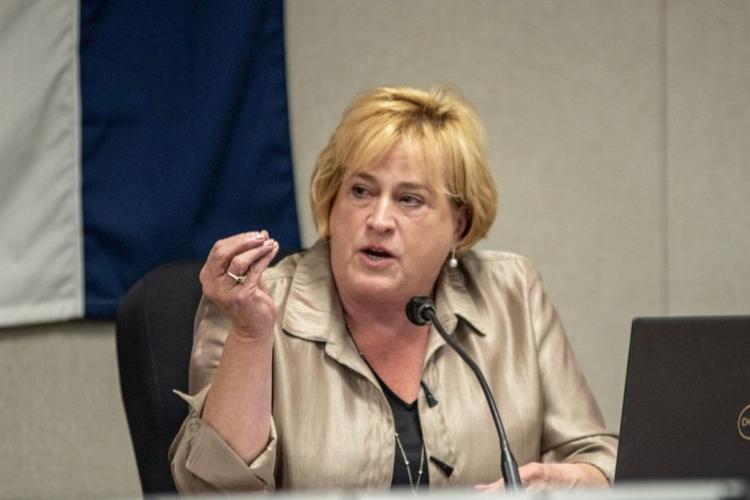
Education commissioner Karla Eslinger speaks during a state Board of Education meeting Tuesday, Aug. 6, 2024.
Missouri students are showing progress on standardized tests administered by the state, with results in some categories approaching — and even exceeding — pre-pandemic levels.
But in other areas — most notably English language arts — students continue to struggle.
The Missouri Department of Elementary and Secondary Education revealed preliminary scores in the Missouri Assessment Program, or MAP, to the State Board of Education in its board meeting last week.
Pamela Westbrooks-Hodge, a board member from Pasadena Hills, said she was “a little deflated that we didn’t see more growth and progress.”
DESE is implementing programs to address low levels of literacy, an issue throughout the United States, with interventions based on the science of reading and increased teacher training.
People are also reading…
Westbrooks-Hodge said the intervention has worked like triage care; it “stopped the bleed,” and scores are static.

English language arts scores remain below pre-pandemic levels, according to preliminary scores in the Missouri Assessment Program presented Aug. 6, 2024, to the State Board of Education, with 56% of students scoring in the “basic” or “below basic” range. This percentage has held steady since 2022.

Math scores are exceeding pre-pandemic levels, according to preliminary scores in the Missouri Assessment Program presented Aug. 6, 2024, to the State Board of Education, with a one percentage point boost in the advanced category compared to 2019 when looking at grades 3-8.
“We made lots of great investments in the last two years, and I think we’re going to see the fruit of that as our score starts to increase,” she said. “All of these interventions are working. They’re stabilizing our educational system, and now we can start layering growth on top of that.”
English language arts scores remain below pre-pandemic levels, according to data presented Aug. 6, with 56% of students scoring in the “basic” or “below basic” range. This percentage has held steady since 2022.
Lisa Sireno, assistant commissioner of quality schools, said it takes “continuous, sustained focused implementation with fidelity at the local level, up to five years, before we start to see results on large-scale measures.”
She noted that teacher shortages could be affecting the scores.
Math scores are exceeding pre-pandemic levels, with a one percentage point boost in the advanced category compared to 2019 when looking at grades 3-8. Sireno noted that middle school math has exceeded pre-pandemic levels.
When looking at scores across all subjects and grades, there is an observable improvement since 2021’s tests. That year, 24% of scores were in the “below basic” range. That’s fallen to 22% this year.
Sireno expects additional analysis, especially as educators look at local-level data.
Missouri Independent is part of States Newsroom, a network of news bureaus supported by grants and a coalition of donors as a 501c(3) public charity. Missouri Independent maintains editorial independence. Contact Editor Jason Hancock for questions: info@missouriindependent.com. Follow Missouri Independent on Facebook and X.
View life in St. Louis through the Post-Dispatch photographers' lenses. Edited by Jenna Jones.
















